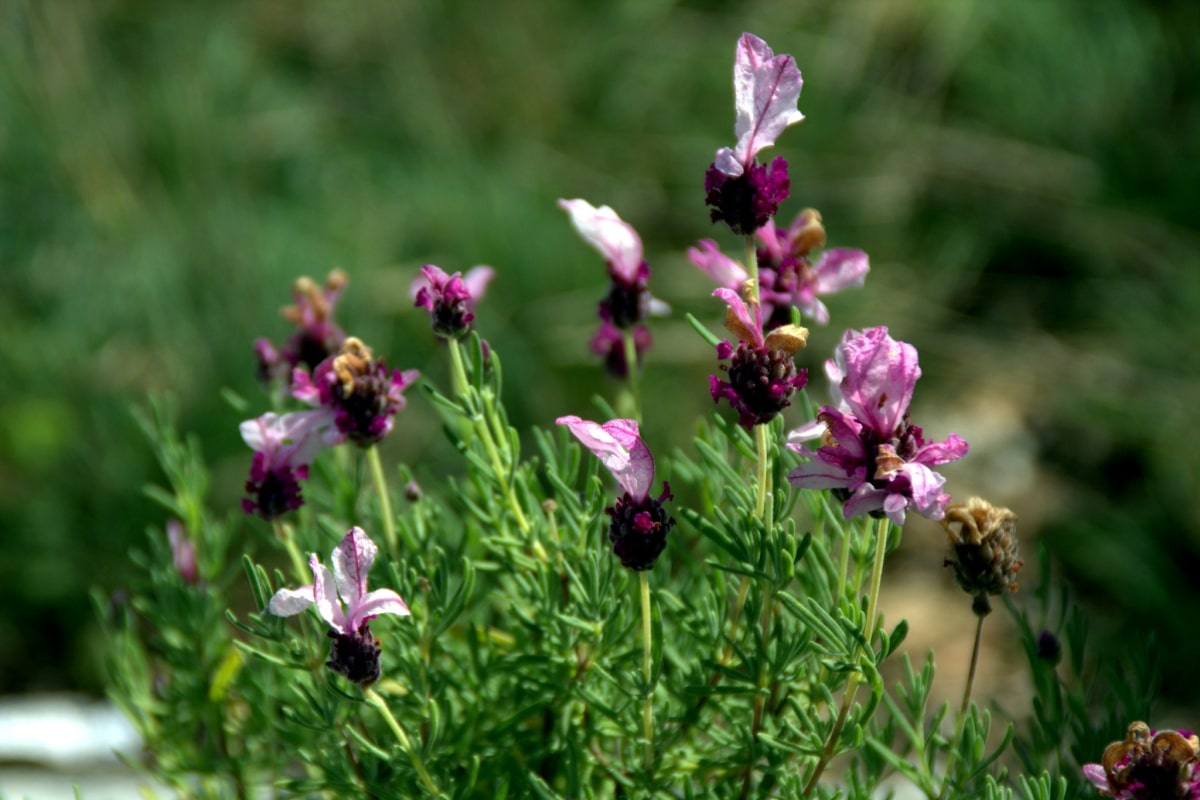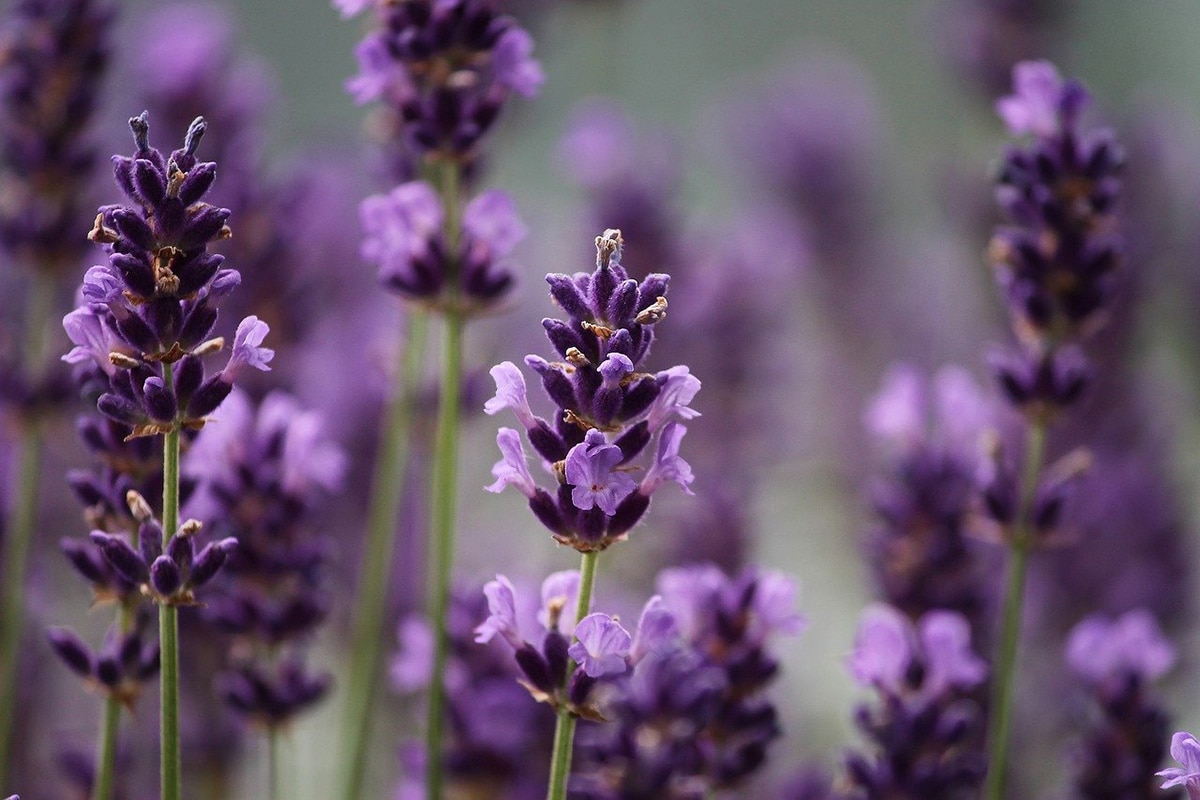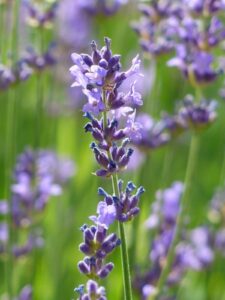
Is there a difference between lavender and lavender? The popular names given to plants can help us identify them, but they also serve to confuse us, as is the case with these two types of aromatic plants.
And it is that when they are not in flower, it is very easy to think that they are the same, but when they bloom, we can see that the shape and color of their flowers is different.
How are lavender and lavender different?
- Image – Wikimedia/Fernando Losada Rodríguez] // Lavender
- Lavender
Genetically, they are two types of plants that are related, so much so that botanists have classified them within the same genus: Lavandula. But one thing happens: the word cantueso is popularly used to refer to the Lavandula Stoechas, and lavender to talk about other species, such as Lavandula angustifolia o lavandula dentata.
In fact, when looking for information about one or the other, files and images of two floors usually come out that, yes, look very similar, but have flowers distinct enough to be thought to be a different species. In addition, it must also be said that while L. stoechas, that is, the lavender itself, is from the Mediterranean region and Macaronesia; the other varieties of lavender are also found in North Africa and Arabia.
What is the habitat of lavender and lavender?
It is estimated that there are 40 types of lavender. In Spain we have a few that are native, such as the lavandula canariensis, lavandula dentata, lavandula pedunculata: Lavandula Stoechas. These are plants that they have evolved to adapt to places where it usually rains little, and where the drought also coincides with the hottest time of the yearie summer. Also, it is important that you know that they grow in open fields, in full sun.
In fact, if you have ever looked for images of lavender fields, such as that of Brihuega (Spain) or those of Provence (France), you will have been able to observe that They are exposed to the light of the star throughout the day, because they do not have large plants that give them shade.
Another detail to take into account if you intend to grow lavender or lavender is the soil: the Lavandula they require a soil with a neutral or alkaline pH, and above all, it must drain the water quickly. The roots of our protagonists do not support waterlogging, so it would be a mistake to plant them in compact and heavy soils, with poor drainage.
When do they bloom?

Both lavender and lavender they produce their flowers in spring. When the temperatures start to warm up, they work hard to produce their flowers, coinciding with the spring awakening of insects, such as bees, butterflies or wasps.
Many of them remain in a state of rest during the winter, so when the cold is left behind, they have an urgent need to feed on the pollen of flowers, such as Lavandula.
What to do to make lavender and lavender bloom?
In addition to putting them in a sunny place, there are things we have to do to make them flourish. These They are plants that resist drought., so if you don't have much experience maintaining some pots or the garden, both lavender and lavender are ideal for starting gardening, as well as for having a beautiful patio with little maintenance.
But for that, we must start from the basis that plants are living beings, and that, especially if we are going to have them in pots, they are going to be beings that are going to depend on us. Thus, although our protagonists are very easy to care for, we don't have to make the mistake of forgetting about them.
And it is that if we want them to be beautiful, it is our duty to provide them with some care that, as you will be able to see below, is very basic:
- Irrigation: both lavender and lavender resist long periods of drought very well as long as they are planted in the ground. But things change if they are in a pot, because in those conditions they have a very limited amount of soil and, furthermore, if they are in a plastic container, it overheats, so the substrate loses moisture faster. For this reason, we will water once or twice a week, trying to keep the soil moist.
- Subscriber: if they are planted in the garden, there will be no need to pay them. Now, if they are in a pot, we do recommend fertilizing them using natural fertilizers, such as guano, for example, or the algae extract that you can buy here. It is important not to use fertilizers (ie chemical fertilizers), as they could cause damage to the fauna. We have to remember that lavender and lavender flowers provide food for pollinating insects, so it is best to use natural products to take care of them.
- Transplant: if we have lavender and lavender in pots, we will have to plant them in other somewhat larger containers when the roots appear through the holes of these, or every 3 years. The time to do it is in spring, before they bloom.

Did you know that lavender and lavender were so similar? Well, here's one more secret: in many places, lavender and lavender are two words used to talk about the same type of plant. But, even so, there is no doubt that they are very pretty.

